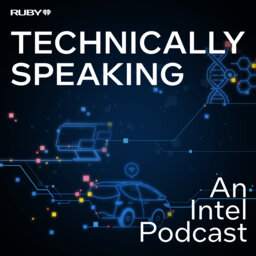Season 2 Episode 4 - How AI Is Making Our Cities Smarter and Safer
No matter the location - from the Global South to Northern Europe, from the Far East to the American West Coast - life in a modern-day city is both exhilarating and exhausting. But the rise of AI technology is making cities smarter and helping us reimagine how cities can be more energy-efficient, safer, and enjoyable than ever before. Technology experts Ashish Yadav and JVS Ramakrishna share their thoughts on the future of our cities and offer real-world examples of where AI has changed the way residents of one bustling city live, work, and commute every day.
Learn more about how Intel is leading the charge in the AI Revolution at intel.com/AIeverywhere
 Technically Speaking: An Intel Podcast
Technically Speaking: An Intel Podcast


